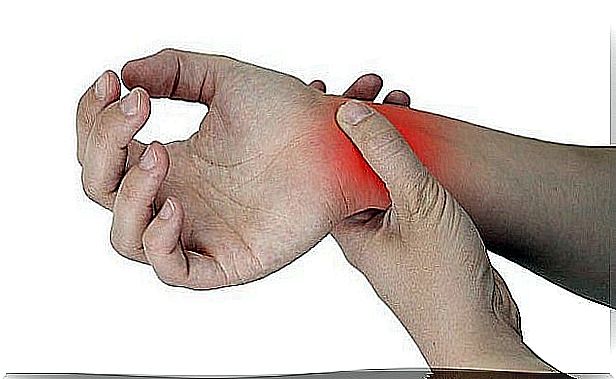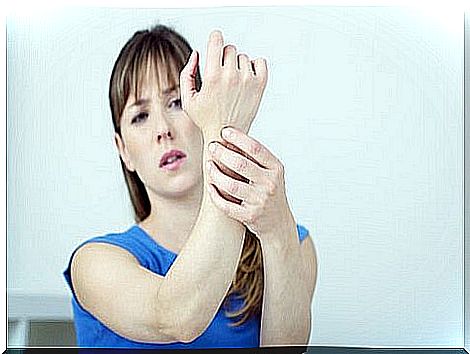Symptoms And Treatment Of Carpal Tunnel Syndrome
Some of the symptoms of carpal tunnel syndrome are: numbness of the muscles, the sensation of tingling and the sensation of current, among others

Carpal tunnel syndrome occurs in the set of ligaments and bones found in the wrist of the hand, exactly at the base of the palm. There is also the median nerve that is responsible for sending impulses to the brain to open and close the hand.
The tendons, when stressed, press on the median nerve and do not allow the sending of signals to the brain. This can be caused by repetitive stressful movements, by maintaining the same posture or position for long periods of time, by arthritis, fluid retention, gout, emotional tensions, etc.
What are your symptoms?
Carpal tunnel symptoms are characterized by pain. In addition, the muscles become numb, tingling, a draft sensation, or a combination of all these symptoms occurs. The pain caused by this syndrome can occur frequently at night, it can lose coordination of hand movements, fist strength and increase clumsiness when taking objects.
Other symptoms of carpal tunnel syndrome can be:
- Tingling in the fingers.
- Strong pain in the thumb with an impulse to spread to the neck.
- Burning on the whole surface of the hand.
- Alterations in sensitivity to different temperatures.
- Swelling in the hand and forearm.
- Changes in the sweating of the hands.
Recommended exercises
It is recommended for those who suffer from carpal tunnel as well as for those who wish to avoid it, to practice a series of physiotherapeutic exercises, which we will present below:
- Do 4 sets of shoulder rotations: up, down, and back. Finish by relaxing your shoulders.
- When using the keyboard avoid moving your wrist, keep it steady and move only your fingers when typing
- Sit up straight. With your right hand on your left shoulder, slowly press your shoulder down as you turn your head to the right. Stretch all the muscle fibers, hold for five seconds, and repeat with the opposite shoulder. Do the exercise 4-6 times per shoulder.
- Take frequent, short breaks during tasks that require repetitive activity and maintain the same wrist movement.
- Make a fist gently, then reach out and move your fingers. Repeat this exercise five times.
From the Mayo Clinic they point out that doing this type of exercise prevents or completely alleviates carpal tunnel syndrome by itself, but that they are more effective if combined with other treatments.

Preventive recommendations
Among the activities or professions with the highest risk of suffering from this syndrome are: workers, packers, machine operators, food handlers, kitchen assistants, cleaning personnel, secretaries or cashiers. Some recommendations that the University Welfare Health and Safety Management System gives us to manage this syndrome or to avoid it are:
- Decrease awkward wrist positions while allowing a few minutes of relaxation and stretching of the ligaments and muscle between daily tasks
- Reduce the vibratory spaces of daily manual activities in your professional work
- Use tools and work objects that allow a comfortable and stable position of the wrist
- Rotate tasks at work to reduce continuous and prolonged movements, thus avoiding the appearance of carpal tunnel syndrome
- Prevent the mouse and keyboard from being higher than the comfortable position of your forearms

Carpal tunnel syndrome spoils the sending of signals from the hand to the brain, thereby impeding mobility and subsequently granting numbness of the hand and retraction of tendons, in addition to the various symptoms mentioned above.









